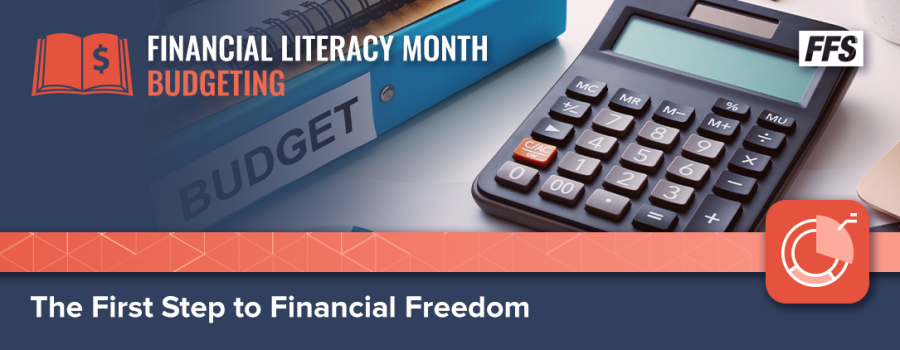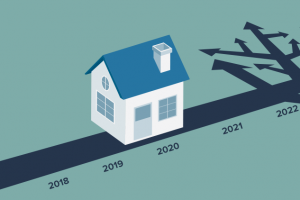April is Financial Literacy Month, a time to focus on building strong financial habits that set you up for long-term success. This first week, Real Secrets of Money is focusing on the first step to that success: budgeting.
—
A well-structured budget is essentially a roadmap for your financial future. Imagine setting out on a long road trip without a GPS or a map. You might take wrong turns, run out of gas unexpectedly, or even end up in a completely different place than you intended. Like a map that keeps you on the right track, a budget helps you navigate your financial journey with confidence, ensuring you reach your goals without unnecessary detours or surprises.
Many people avoid budgeting because they think it’s restrictive, but in reality, a budget gives you freedom. It helps you understand where your money is going, ensures you’re prioritizing necessities, and allows for guilt-free spending within your means. A good budget reduces financial stress, helps you prepare for emergencies, and brings you closer to your financial goals.
Whether you’re aiming to eliminate debt, grow your savings, or simply gain control of your money, budgeting is the foundation that makes it all possible.
How to Create a Budget That Works for You
Budgeting doesn’t have to be complicated. Here’s a step-by-step approach to setting up a budget that works for your lifestyle:
1. Track Your Income and Expenses
Start by calculating your total income after taxes. This includes your salary, side jobs, rental income, or any other sources of earnings. Then, list out all your expenses in three categories:
- Fixed expenses: These are costs that remain the same every month, such as rent or mortgage payments, insurance premiums, car payments, and subscriptions.
- Variable expenses: These fluctuate based on your usage and lifestyle choices, such as groceries, dining out, transportation, entertainment, and clothing.
- Periodic expenses: These are costs that occur irregularly, such as annual insurance premiums, shopping for holiday gifts, car maintenance, medical expenses, or school fees. Since they don’t come up every month, it’s easy to overlook them in a budget. Planning ahead by setting aside small amounts each month can prevent these expenses from catching you off guard.
Tracking your expenses for a month can give you a clear picture of where your money is going and where you might need to make adjustments.
2. Use the 50/30/20 Rule
A common budgeting framework is the 50/30/20 rule, a method where you divide your budget into three categories:
- 50% for necessities: These include essential expenses like housing, utilities, groceries, transportation, insurance, and minimum debt payments.
- 30% for wants: This category covers discretionary spending, such as entertainment, hobbies, dining out, travel, and non-essential shopping.
- 20% for savings and debt repayment: This portion should go toward building your emergency fund, saving for retirement, investing, and paying down debts beyond the minimum requirement.
Adjust these percentages based on your personal financial situation. The key is to ensure your spending aligns with your priorities.
Many people avoid budgeting because they think it’s restrictive, but in reality, a budget gives you freedom.
3. Automate Where Possible
One of the easiest ways to stick to your budget is to automate payments and savings. This includes:
- Setting up automatic bill payments for rent, utilities, loan payments, and credit cards to avoid late fees.
- Automating savings contributions to ensure that a portion of your income goes directly into an emergency fund, retirement account, or investment portfolio before you have a chance to spend it.
- Using budgeting apps that categorize your expenses and notify you when you’re close to exceeding your budget in a particular area.
Automating your finances reduces the risk of missed payments, encourages consistent saving, and makes budgeting feel effortless.
4. Plan for Unexpected Expenses
Emergencies happen: Car repairs, medical bills, home maintenance, or sudden job loss can throw your budget off track if you’re not prepared. To maintain your financial stability:
- Build an emergency fund that covers at least 3 to 6 months of living expenses.
- Create a sinking fund for periodic expenses, such as annual insurance premiums, shopping for holidays, or car maintenance, so you’re not caught off guard.
- Include a “miscellaneous” category in your budget for smaller, unexpected costs that don’t fit neatly into other categories.
Having a financial cushion helps prevent these surprises from derailing your progress.
5. Review and Adjust Regularly
Flexibility is key in budgeting. Your financial situation will change over time due to shifts in income, new expenses, or evolving financial goals. To stay on track:
- Review your budget every month to see if you’re overspending in certain areas or if there’s extra money to allocate toward savings or debt repayment.
- Adjust your spending categories if you find that your original budget doesn’t reflect your actual lifestyle and needs.
- Set new financial goals as you achieve existing ones — whether that means saving for a home, investing more aggressively, or paying off debt faster.
Checking in regularly allows you to make course corrections, ensuring you still reach your destination, whether it’s a debt-free life, a comfortable retirement, or financial independence.
The 50/30/20 rule can help simplify your budget: 50% needs, 30% wants, 20% savings.
The Power of a Budget
Budgeting isn’t about limiting yourself, it’s about taking control. When you budget effectively, you can reduce financial stress, work toward your goals, and build a solid foundation for the future.
Think of it this way: A well-planned budget keeps you on the highway toward financial success. Without it, you might find yourself stuck in traffic, going in circles, or even running out of fuel before reaching your goal. This Financial Literacy Month, take the first step toward financial freedom by creating a budget that works for you. Your future self will thank you.
—
Learn more about budgeting and other Financial Literacy Month topics at Real Secrets of Money. Visit our blog for more insights and connect with a financial literacy teacher to start your journey to financial well-being today.




